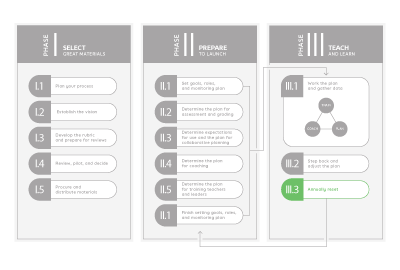What is the goal?
The goal of this key action is to look back on the year, celebrate successes, name areas of growth, and define the next level of work for the following school year.
Why this key action is important
After going through multiple cycles of the improvement process throughout the school year, it is important to reflect on the year as a whole. The end-of-year reflection is slightly different than quarterly stepbacks. The data is different since there is access to summative data and there’s an opportunity to dig into additional data sources that might have been missed during the school year. Also, the context is different, with system and school leaders looking ahead to the next school year, particularly with an eye to changes in workforce. Schools change more dramatically from year to year than within a given year. The end of the year provides an opportunity to revisit the improvements list generated throughout the school year and consider which changes to tackle during the upcoming year and over the summer. It’s a chance to reignite the fire for the team as well as institutionalize work started this school year.
Explanation of language
We use the term annual planning to reference end of one school year planning in preparation for the next year, but this can take place at any point in the spring or in two parts – once before data is back and again once all data is in.

